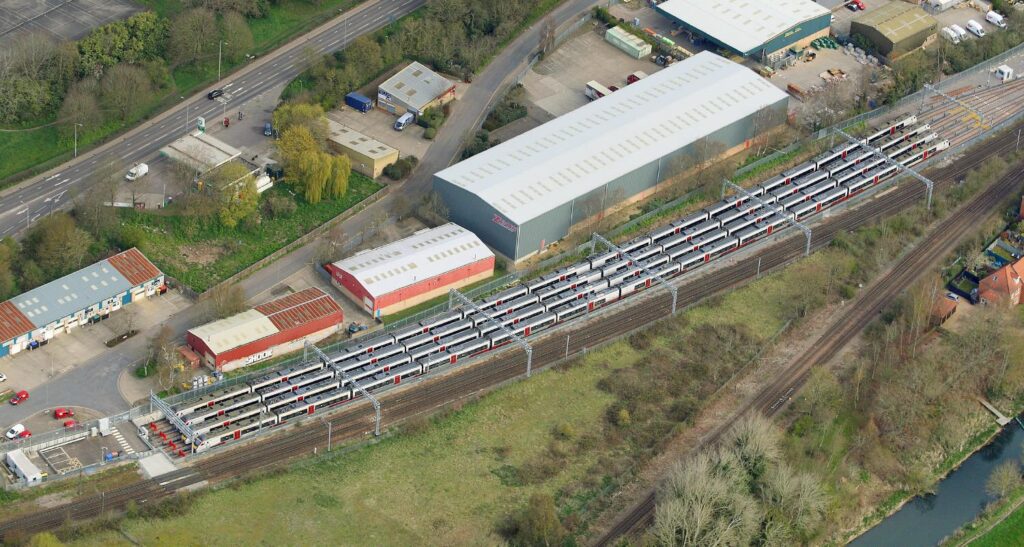Case Studies

Removal Of Crewe Conditional Double Red Controls
Mosaic Rail were initially contracted by Network Rail ‘Project Alpha’ to assess the feasibility of removing the restrictive controls by means of disconnecting conflicting routes up to the Limit of Shunt on the Up Fast line and also enhancing TPWS protection.
‘Project Alpha’ is a performance improvement programme initiated by Network Rail in November 2019 as part of the wider CP6 delivery strategy. The purpose of this programme is to bring quick wins in infrastructure reliability by fixing longstanding timetable frailties as well as longer-term plans to remedy the timetable, train regulation and other strategic and structural issues across the North West and Central region of the UK rail network.
Mosaic Rail undertook stakeholder consultation with the TOCs, FOCs and local NR operations to provide an enhanced TPWS solution which allowed the existing CDR controls to be removed from the interlockings at Crewe SCC and Crewe Coal Yard.
Under a separate contract from VolkerRail, we continued to develop the project from GRIP 3 through to GRIP 6 undertaking the signalling design on their behalf.
On Behalf of VolkerRail, Mosaic Rail undertook the following in the course of successfully completing this project:-
GRIP 3, 4 & 5 Signalling Scheme Plan Development and Production incl. MSRP representation
TPWS Calculations
Detailed Design Specification
Correlation Specification and Waivers
Correlation Report
Signal Spacing Calculations
Signal Sighting Report
E810 Reasonable Opportunity Report
Location Area Plan
Aspect Sequence Charts
Detailed Relay Room / Interlocking Design
Detailed Location Design
Detailed Stagework Design
Section C Notice
Final Records Closeout and Handback
At 06:45 on Sunday 6th March 2022, the removal of the consecutive Conditional Double Reds controls and the commissioning of the enhanced TPWS solution was signed into use. This important intervention to the infrastructure has seen vastly improved times for trains approaching Crewe from the North on the Up Fast line.

Norwich Victoria Sidings
Mosaic Rail were contracted by Keltbray Aspire to provide signalling design services in order to re-instate Victoria Sidings just outside Norwich. Victoria Sidings became a stabling facility for the new fleet of Bombardier 720/5 EMU sets leased to Greater Anglia.
Mosaic Rail was initially awarded the GRIP 5 signalling contract in April 2019 to reinstate the sidings by removing existing permissive working from Norwich Interlocking as well as altering existing routes from Last to first wheel replacement in the area.
Upon contract award, it was quickly realised that the GRIP 4 documentation received was deficient in terms of compliance and Mosaic Rail was awarded an additional package of work to provide an updated scheme plan and supporting calculations, a compliance report in accordance with NR/L2/SIG/30009/E810, an Operating Requirements Specification and a Driveability assessment.
Working closely with all stakeholders, AiP for the project was accepted by MiSRP and the project moved into GRIP 5 detailed design.
The design team took on the challenge of a reduced programme to produce, check and assure a number of deliverables including Control Tables, detailed Location and Relay Room design, Bonding design, panel designs at Colchester PSB, Trowse Signal Box and the local Maintenance Panel at Norwich RR to achieve full AFC in December 2019.
Mosaic Rail was also asked, as an aside to signallling design, to support Keltbray with procurement of a mainline 4-aspect Dorman iLS signal and auxiliary bonding design which we managed through our subcontractors Unipart Dorman and Andromeda Engineering respectively.
The commissioning was successfully handed back to Greater Anglia and Network Rail on Monday 27th January 2020 as planned without any accidents or injuries.

